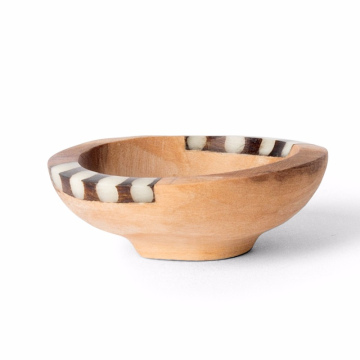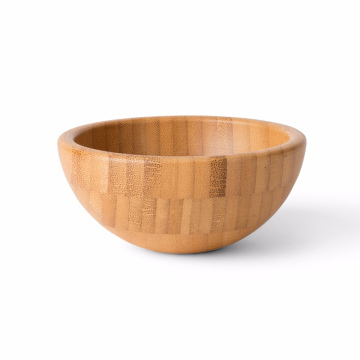Introduction to Donburi
Donburi, a cherished staple in Japanese cuisine, represents a harmonious blend of history, culture, and flavor. Originating from traditional dining practices, donburi refers to a bowl of steamed rice topped with a variety of ingredients, creating a meal that is nourishing and satisfying. Its inception can be traced back to the Edo period when the concept of serving food in a bowl gained popularity among the rising merchant class. As a result, donburi emerged as an accessible yet flavorful dish, embodying not only convenience but also creativity in its presentation.
The significance of donburi extends beyond mere sustenance; it showcases the diversity and richness of Japanese culinary arts. Each donburi is a personal expression of regional flavors, seasonal ingredients, and cooking techniques. This versatility has propelled the dish into various forms, enabling chefs and home cooks alike to innovate while preserving the essence of this time-honored meal. Today, donburi can be found in myriad variations, ranging from the richly flavored gyudon (beef donburi) to the delicate sashimi donburi, demonstrating its adaptability to different tastes and preferences.
At its core, a donburi consists of three essential components: rice, toppings, and sauce. The rice is typically short-grain Japanese rice, known for its sticky texture and ability to hold flavors. The toppings can vary widely, encompassing proteins like chicken, seafood, or vegetables, often cooked in flavorful broths or glazes to enhance their taste. Completing this delightful dish, sauces play a pivotal role in imparting depth and umami, transforming a simple bowl of rice into an extraordinary culinary experience. As we explore the various donburi varieties, it becomes clear that this beloved dish serves as a canvas for culinary creativity, marrying tradition with innovation.
One Bowl, Endless Flavors: Exploring Japan’s Donburi Culture
Explore the world of Donburi, a beloved staple of Japanese cuisine that combines rice, flavorful toppings, and savory sauces. Discover its rich history, cultural significance, and modern adaptations. Learn about popular varieties like gyudon, katsudon, and unadon, and find tips and recipes for making your own delicious donburi at home. Whether you're a seasoned chef or a curious beginner, this culinary journey will inspire you to embrace the versatility and creativity of this comforting dish.
The Complete Guide to Steak: Types, Cooking Methods, and Presentation
When it comes to culinary delights, steak holds a special place in the hearts of food enthusiasts around the world. Its rich flavor, tender texture, and versatility in preparation make it a favorite in many kitchens. Whether it’s a simple grilled steak or a finely cooked filet mignon, the preparation of this classic dish is an art form that can elevate any meal. This guide explores the various types of steak, the methods used to cook them, and how to present them beautifully on your plate. Understanding these elements will help you master steak preparation like a true culinary expert.
Exploring the Different Types of Steaks Available
Steaks come in a variety of cuts, each offering unique flavors and textures that appeal to different culinary preferences. The most common types of steaks include ribeye, sirloin, tenderloin, and T-bone. Ribeye, known for its marbling, provides a rich and juicy flavor that makes it a favorite among steak lovers. On the other hand, sirloin is leaner, offering a more firm texture with a slightly less fatty finish. Tenderloin, which includes the famous filet mignon, is prized for its buttery tenderness and minimal fat, making it a luxury option in many fine dining settings.
In the culinary world, each cut is celebrated for its distinctive characteristics, allowing chefs to create a wide range of dishes. For instance, flank steaks are perfect for grilling, while skirt steaks are often used in stir-fries and fajitas. These cuts require different techniques, and understanding the nuances of each type will help you refine your culinary skills. With so many choices, it's essential to know the differences between each cut to ensure you're preparing the steak that best suits your personal taste and the desired cooking method.
Different cuts also vary in price, with premium options like Wagyu and Kobe beef commanding higher prices due to their unique marbling and flavors. In the culinary community, these high-quality steaks are often seen as the pinnacle of steak preparation, as they require special handling to bring out their full flavor potential. Whether you’re preparing a budget-friendly cut or indulging in an upscale option, understanding the types of steaks available is the first step toward mastering steak preparation in your kitchen.
Key Methods of Cooking Steak to Perfection
Cooking a steak to perfection requires both skill and attention to detail, with several methods available to bring out the best in each cut. The most popular technique is grilling, where the steak is cooked over an open flame. This method imparts a smoky flavor and creates a satisfying sear on the outside while keeping the inside juicy and tender. Grilling is especially suitable for cuts like ribeye or T-bone, as the high heat helps to render the fat and enhance the steak's natural flavors.
Another popular method is pan-searing, which involves cooking the steak in a hot skillet with oil or butter. This technique allows for more control over the cooking process, making it ideal for those who prefer a perfectly cooked steak. The Maillard reaction, which creates the golden-brown crust on the outside of the steak, is crucial in this method. The result is a flavorful and crispy exterior that contrasts with the juicy, tender interior. Pan-searing is especially popular for thinner cuts like sirloin or filet mignon, where the goal is to achieve a balance between a well-seared crust and a tender center.
Sous-vide cooking has also gained popularity in recent years among culinary professionals. This technique involves vacuum-sealing the steak and cooking it in a precisely controlled water bath at a low temperature for an extended period. The slow, even cooking process ensures that the steak is cooked to the perfect level of doneness, maintaining moisture and tenderness throughout. Afterward, the steak is usually finished with a quick sear on the stovetop or grill to develop a crust. This method is ideal for those seeking a consistently perfect steak with a uniform texture from edge to edge.
Understanding the Importance of Steak Doneness Levels
When it comes to cooking steak, the level of doneness is crucial in achieving the perfect balance of flavor and texture. Steak doneness ranges from rare to well-done, each with distinct characteristics that appeal to different culinary tastes. A rare steak is lightly seared on the outside but remains red and cool in the center, offering a tender and juicy experience for those who enjoy a more delicate texture. Medium-rare, a favorite among many steak lovers, provides a warm pink center and is ideal for showcasing the natural flavor of the meat.
Medium steak is cooked with a slightly firmer texture and a less juicy interior, while medium-well and well-done steaks are cooked through with minimal moisture. These higher doneness levels are often chosen by those who prefer a more robust, less tender texture in their steak. Understanding the nuances of steak doneness is an important part of mastering culinary steak preparation. The best way to achieve the desired doneness is by using a meat thermometer to monitor internal temperatures and avoid overcooking or undercooking your steak.
For those looking to enhance their steak experience, the right level of doneness can make all the difference in the final result. Chefs often recommend using high-quality cuts of beef for lower doneness levels, as the natural flavors are more pronounced when the steak is cooked less. Conversely, tougher cuts like flank steak may require longer cooking times to become tender at higher doneness levels. Whether you prefer your steak rare or well-done, understanding the science behind steak doneness will help you achieve the perfect bite every time.
The Art of Presenting Steak Like a Professional
Presentation is an essential aspect of any culinary creation, and steak is no exception. A beautifully presented steak not only elevates the dining experience but also showcases the chef’s attention to detail. One of the simplest ways to present a steak is by pairing it with a garnish that complements the dish. Fresh herbs, such as rosemary or thyme, can be placed on top of the steak or used as a garnish on the plate to add a burst of color and aroma. Additionally, adding a dollop of compound butter can bring an extra layer of richness and sophistication to the dish.
The plating of the steak should also take into account the sides and sauces that accompany it. For example, pairing your steak with a side of mashed potatoes or roasted vegetables adds balance to the plate and enhances the overall culinary experience. Sauces like béarnaise, chimichurri, or a classic red wine reduction can be drizzled over the steak or served on the side to complement its flavor. Thoughtful plating that combines textures, colors, and flavors creates a memorable presentation that will impress your guests and elevate the dining experience.
When presenting steak, it’s also important to consider the shape and size of the cut. A neatly sliced steak, especially when served with the grain, allows for easier eating and adds a professional touch to the presentation. For an elegant touch, you might also consider serving individual portions of steak on small plates, making each piece appear more refined and personalized. By incorporating these culinary techniques into your steak preparation, you can create a visually stunning and delicious dish that delights both the eyes and the palate.
Pairing Wine with Steak for the Ultimate Experience
A perfect steak dinner is often made even better with the right wine pairing. The rich, bold flavors of steak can be beautifully complemented by a glass of wine that enhances the dining experience. Red wines, particularly those with full-bodied profiles, are the go-to choice for pairing with steak. Cabernet Sauvignon, with its tannic structure and deep flavors, is an excellent match for fattier cuts like ribeye or T-bone, as it balances the richness of the meat. Similarly, a glass of Malbec or Merlot pairs beautifully with a tender filet mignon or sirloin, offering a smooth and harmonious flavor profile.
In addition to red wines, white wines can also make a surprising yet delightful match for steak. A full-bodied white, such as Chardonnay, with its creamy texture and subtle oakiness, can be a great accompaniment to steak with a richer sauce or butter. The key to pairing wine with steak is to consider the intensity of both the wine and the steak. A bold, well-seasoned steak calls for a wine that can hold its own, while a more delicate steak may pair better with a lighter, more refined wine.
Culinary experts suggest experimenting with different wine pairings to discover the perfect combination for your personal taste. Some steak aficionados even enjoy pairing their steak with a glass of champagne, appreciating the contrast between the crisp, effervescent wine and the richness of the meat. By considering factors such as the cut of steak, seasoning, and sauce, you can elevate your steak dining experience with a carefully selected wine that enhances every bite.




